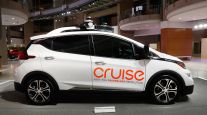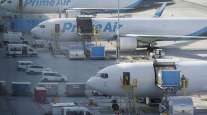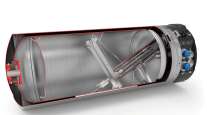Senior Reporter
Cities Need ‘Sophisticated Urban Freight Policies,’ Report Says

[Stay on top of transportation news: Get TTNews in your inbox.]
Officials aiming to facilitate the flow of freight amid advancements in autonomous vehicle technologies need policies designed to reduce the frequency of freight trips while enhancing safety, a new report by the National Association of City Transportation Officials concluded.
The authors of “Blueprint for Autonomous Urbanism” determined cities must “develop sophisticated urban freight policies” to accommodate the changing transportation landscape. Large vehicles crossing urban landscapes would reduce via coordinated freight management, while centralized freight distribution serving city centers would allow most deliveries to occur via small, high-efficiency modes, according to the report.
“Cities will need to rethink long-standing policies and practices for transit systems, transportation demand, data and freight distribution in order to manage the impact of this new technology on their streets and leverage it for the improvement of the public realm,” as the report put it.
Around the country, agencies and private firms are testing autonomous systems, while developments in unmanned aerial systems are being utilized to inspect bridges and rail corridors.

Sadik-Khan
“When the automotive age swept the nation a century ago, cities responded not by adapting cars and trucks to the varied uses of the street, but with a relentless clearcutting of obstacles from curb to curb,” Janette Sadik-Khan, chairwoman of the group said Sept. 9. “As we anticipate the arrival of self-driving vehicles on city streets today, we have a historic opportunity to correct these mistakes, which starts with a new blueprint for cities.”
Policy questions about advances in autonomous technology and service delivery via drones merit attention as stakeholders proceed to test new programs, argued Margaret Taylor, fellow in governance studies at the Brookings Institution. During a panel discussion at the Washington-based think tank Sept. 10, she said, “The technology is just developing at a much faster pace than our ability, from a governance perspective, to think through these issues and implement them.”
Transportation leaders returning to Capitol Hill this month have yet to announce when they intend to consider legislation that would establish guidelines for the deployment of autonomous vehicle technology. Those members had expressed interest in considering legislation during this session of Congress.
In the previous session, Sens. John Thune (R-S.D.) and Gary Peters (D-Mich.) co-sponsored a bill that would have established a policy framework for the technology. Although the House had passed its version, the Senate bill did not receive a vote before the session’s adjournment.
The technology potentially could enhance safety along freight and commuter corridors and provide transportation assistance for disabled individuals, proponents argue.




